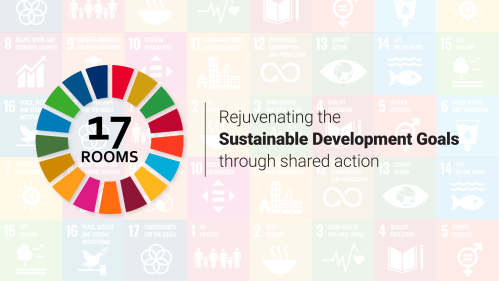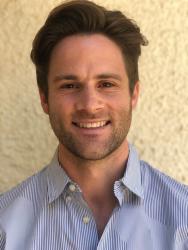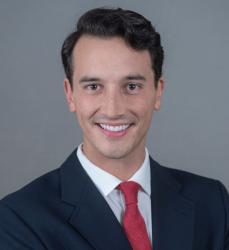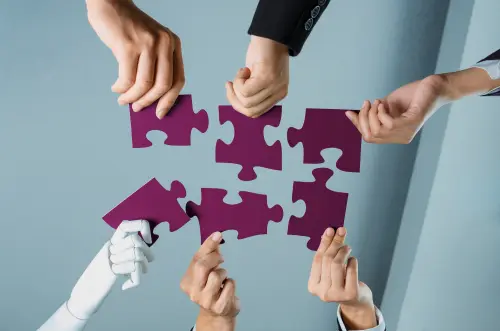More information on the 17 Rooms initiative is available here or by contacting [email protected]. Communities or organizations interested in collaborating on 17 Rooms methods to forge a greater impact on local sustainable development priorities are invited to respond to the 17 Rooms-X open call for collaboration.
Communities around the world are increasingly recognizing that breaking down silos and leveraging shared resources and interdependencies across economic, social, and environmental issues can help accelerate progress on multiple issues simultaneously. As a framework for organizing local development priorities, the world’s 17 Sustainable Development Goals (SDGs) uniquely combine a need for broad technical expertise with an opportunity to synergize across domains—all while adhering to the principle of leaving no one behind. For local leaders attempting to tackle intersecting issues using the SDGs, one underpinning question is how to support new forms of collaboration to maximize impact and progress?
In early May, over 100 people across the East Central Florida (ECF) region in the U.S. participated in “Partnership for the Goals: Creating a Resilient and Thriving Community,” a two-day multi-stakeholder convening spearheaded by a team of local leaders from the East Central Florida Regional Resilience Collaborative (ECFR2C), the Central Florida Foundation, the City of Orlando, Florida for Good, Orange County, and the University of Central Florida. The convening grew out of a multi-year resilience planning process that leveraged the SDGs as a framework for tackling local economic, social, and environmental priorities all at once.
To move from community-wide planning to community-wide action, the organizers experimented with a 17 Rooms process—a new approach to accelerating collaborative action for the SDGs pioneered by the Center for Sustainable Development at Brookings and The Rockefeller Foundation. We collaborated with the ECF local organizing team and, in the process, spotted a range of more broadly relevant insights that we describe here.
The SDGs as a helpful framework for action
In 2019, recognizing the potential of the SDGs for defining local priorities and spurring local action, the ECF leadership team decided to put the goals at the center of a multi-year effort to foster regional resilience. In collaboration with 41 partners, ECFR2C launched a “Strategic Resilience Action Plan“ in early 2022. The action plan outlined the drivers of community resilience across the SDGs, including safe and affordable housing; safe open spaces; health care access; food access and security; access to energy and clean water; economic mobility; and safe, clean, reliable, and affordable transportation. The action plan designated practical objectives to strengthen these drivers (e.g., through a regional greenhouse gas emissions inventory) and techniques (e.g., dashboards) to track progress. In parallel, the Central Florida Foundation developed a framework of five priority areas for targeted impact fund investment and action.
Using 17 Rooms to enable multi-disciplinary and community-wide collaboration
After engaging with a full range of community stakeholders and issues to develop the comprehensive action plan, the ECF leadership team was looking for a cross-cutting, community-wide process to spur collaboration, akin to the collective impact model. The ECF organizing team wanted a straightforward way to convene around the SDGs, to bring natural—and sometimes unconventional—allies together with enough diversity to generate new ideas and pathways for local cooperation, collaboration, and innovation for advancing shared priorities.
17 Rooms has proven useful at multiple scales of collaborative action, from a global flagship process that promotes targeted collaborations among global leaders under each SDG to “17-X” experiments by universities, regions, and nations that unlock collaborative action within their institutions or among partners. At the heart of the model, participants assemble into 17 curated working groups (or “Rooms,” one per SDG) to brainstorm practical next steps that they could take in the next 12 to 18 months to advance priorities within each SDG. Action proposals are then shared across Rooms to surface opportunities for practical collaboration across goals.
Taking the next step, not the perfect step
The ECF 17 Rooms process was held on day two of the two-day “Partnership for the Goals” convening, following a series of informational seminars on the state of local efforts to address SDG issues on day one. After an introductory plenary session, participants gathered in their assigned SDG Rooms for an in-depth two-hour discussion to identify practical priorities and actions that could be taken to move things forward in their goal.
The focus on taking practical next steps urged participants to avoid overly abstract or theoretical conversations about what perfect looks like or what others should be doing to advance an issue. The 12 to 18-month time horizon for action provided enough scope to encourage next steps that were “big enough to make a difference, but sized right to get done” within the next calendar year or budget cycle.
“big enough to make a difference, but sized right to get done”
The composition of each Room was curated to blend participants with similar interests but varied professional expertise and resources, with the aim of sparking actions that spanned beyond the scope of just one organization or one type of organization. Room participants were challenged to find where their comparative advantage could contribute to their Room’s action agenda, whether they were a businessperson in Orlando or a government employee from the Space Coast. Shared responsibility, “leaving your institutional agendas at the door,” and “breaking from business as usual” emerged as recurring themes as Rooms hashed out proposals for action.
After their within-Room Meetings, participants visited one other Room, drawing on their own professional expertise to help test, validate, and strengthen that Room’s actions. Finally, the closing plenary followed a fun and energetic “rapid report-out” session, in which each Room had 90 seconds to share emerging ideas with other Rooms to identify opportunities for collaboration. ECF organizers compiled these ideas and are working across all Rooms to support achieving these actions.
Action, insight, and community
How did the local 17 Rooms process help ECF leaders advance their work? Three forms of outputs seemed to stand out, and were similar to some of the experiences from other 17 Rooms processes:
- Concrete actions beyond the scope of one organization. Action proposals ranged from multistakeholder efforts to establish baseline equity data for the region to expanding broadband access as a way to help alleviate extreme poverty. The process surfaced exciting cross-Room collaborations, too. For example, Room 1 (SDG1: No Poverty) and Room 8 (SDG8: Decent Work and Economic Growth) coordinated a seminar series explaining the implications of the scheduled minimum wage increase on reduction of public benefits (dubbed the “Fiscal Cliff”) for businesses and employees.
- Novel insights through a common language. The SDGs provided a common language and framework to help each participant understand that what they work on has a place in a larger context of community-wide action. For example, participants’ diverse perspectives on the reasons for the shifting nature of work helped Room 8 co-leads consider new ways to support more meaningful work, such as directing public resources toward job-seeking services or promoting employee ownership initiatives. Several Room co-leads even committed to identifying and branding the SDGs associated with their organization and rewriting their own organization’s strategic plan using the SDGs.
- Cross-disciplinary communities. The 17 Rooms process provided a neutral space for participants to build new relationships across professional and geographical silos. In the days and weeks following the main event, the local leadership group fielded numerous requests from participants to connect with other participants from different Rooms. For instance, a coalition of members from Rooms 2, 11, 13, 14 and 15 has connected and aligned on actions to create land trusts in ECF that will consider climate impacts on biodiversity, ecosystem services, and sustainable agriculture. One participant in Room 3 commented that 17 Rooms provided “knowledge … of additional resources available and … a sense of shared responsibility … that we are not alone.”
Above all, ECF’s 17 Rooms exercise fostered a sense of excitement among participants. This appeared to be driven by a feeling that ownership and representation within the global framework of the SDGs. 17 Rooms worked as a catalyst for a holistic, community-wide network of SDG-committed local actors across multiple organizations throughout the region. A focus on practical next steps helped translate the region’s medium- to long-term strategic priorities for sustainable development into practical projects, learnings, and partnerships.
In his remarks to conclude the two-day convening, James Bacchus, a distinguished university professor at UCF and former member of Congress, argued that the outcomes of the day’s 17 Rooms exercise demonstrated grassroots democracy in action. At its core, grassroots democracy is about agency—about each citizen having a part to play in shaping their own society. Professor Bacchus described the 17 Rooms exercise as a valuable platform for enabling local collaboration and innovative action toward this vision for the people of East Central Florida.
The Brookings Institution is committed to quality, independence, and impact.
We are supported by a diverse array of funders. In line with our values and policies, each Brookings publication represents the sole views of its author(s).









Commentary
17 Rooms: A catalyst for community-wide action on sustainable development
December 9, 2022